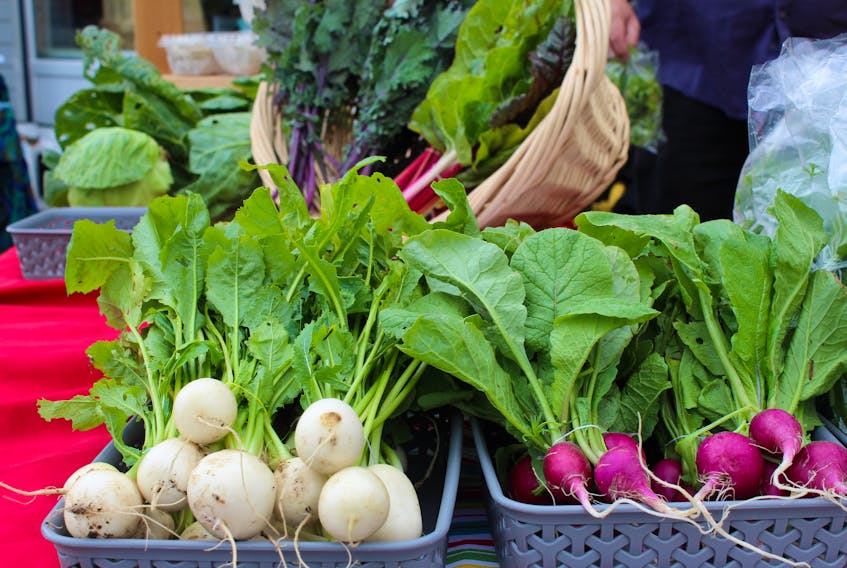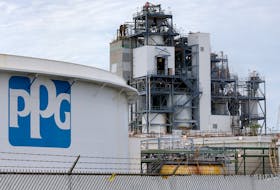ST. JOHN'S, N.L. — Decades of decline has reduced farming in Newfoundland and Labrador to a relatively small industry, yet there remains some optimism the province can find a way to improve food security.
The latest edition of the annual Vital Signs report was released Wednesday, Nov. 6. It offers a wealth of data and information on various topics, including civic engagement, the economy, health, labour and the environment.
The state of food security in the province is one of this year's topics, and a lot of the data presented would appear disheartening to anyone hopeful that crops grown in Newfoundland and Labrador can make further inroads to local dinner plates.

The number of farms provincewide have declined precipitously over the years, dropping almost 90 per cent since 1951. There were 3,626 that year and only 407 as of 2016. According to Food First NL, 90 per cent of the fresh vegetables consumed in this province are imported, and when ferries are delayed, Newfoundland and Labrador is left with a food supply that will only last for two-to-three days.
Farmland itself is costly compared to the rest of Canada, with the average value of land and buildings per acre in Newfoundland and Labrador $3,416 in 2016, above the national average of $2,696. Between 2011 and 2016, total farm area decreased 8.5 per cent to 70,747 acres. Field vegetable area over the same period declined eight per cent to 813 acres, and the total land dedicated to farming fruit and berries dropped by a massive 40 per cent to 863 acres.
Ivan Emke, who retired in 2018 after 25 years serving in various positions at Memorial University's Grenfell Campus, hosts a podcast and radio program on food security in Newfoundland and Labrador — "Fit to Eat: The NL Farm and Food Show" (Emke also contributed an article on the topic to the Vital Signs report). He said an entire generation's move away from farming culture played a big role in the overall decline in Newfoundland and Labrador.
"There was a period of modernization that took place from the 1940s, 50s and 60s on, and one of the things that happens is a whole generation decides that having to provide for yourself — have your own gardens, have your own goats, chickens and cattle — is a sign of underdevelopment or a lack of development," he said. "In order to modernize, they want to get their food in bags and their milk in tins."
New hope
In contrast, Emke sees a younger generation moving away from this culture and back towards finding other ways to obtain food, including producing it themselves and supporting farmers. The Vital Signs report does note Newfoundland and Labrador has the highest proportion of farmers selling directly to consumers (34 per cent) in all of Canada. The national average was 13 per cent.

"The people I know who are (self-preserving and growing food) have a wider variety in their diets. They're growing more interesting things than were grown in the past, and all of that is going to mean people are more likely to see that as an attractive lifestyle," he said, later adding there's an increased awareness of the value of picking berries and making use of foods that grow in the wild.
Another topic touched upon in the Vital Signs report is climate change. With average daily temperatures expected to increase by 3.3 C in 50 years, changes are expected when it comes to wildlife, invasive species, disease and growing seasons.
"One of the really unfortunate things is people say, 'It's going to get warmer and agriculture will be better' ... They don't anymore, because it's not really global warming, it's more climate disruption."
For Newfoundland and Labrador, Emke sees a unique challenge on the horizon — its position on the supply chain for food.
"We're down pretty far on the list," he said. "One of the things has to do with our own production capacity. The other thing though has to do with the 90-some per cent of the food that we ship in. Is that still going to be available? That's worries me more than whether we'll be able to adapt to new bugs or new pests coming on or new diseases. It might also mean there'll be new crops.
But it's all a balance."
The full Vital Signs 2019 report can be accessed at https://www.mun.ca/harriscentre/vitalsigns/.
Twitter: @CBNAndrew
RELATED









